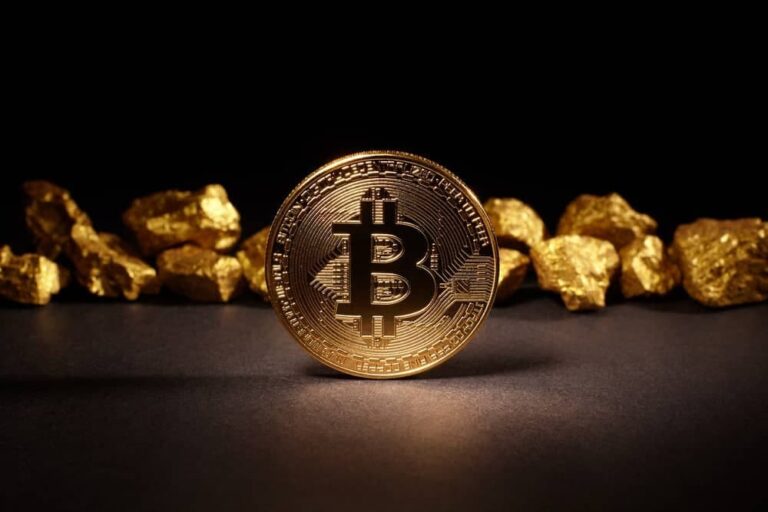In an ever-evolving financial landscape, the roles of traditional and digital assets are becoming increasingly intertwined, pushing the boundaries of central bank reserves. As investors and institutions navigate the complexities of global economics, two noteworthy additions are poised to redefine financial security by 2030: Bitcoin and gold. These assets, while historically distinct, are drawing compelling parallels in their journey towards becoming cornerstones of modern financial strategies.
The Future of Central Bank Reserves: Bitcoin and Gold’s Emerging Role by 2030
A recent analysis by Deutsche Bank has shed light on the evolving dynamics of global reserve assets, forecasting that Bitcoin and gold could prominently feature on central bank balance sheets within the next decade. Historically, gold has been the ultimate safe haven, but Bitcoin is now emerging as its digital counterpart, increasingly recognized for its stability and hedging capabilities.
Bitcoin’s Rising Legitimacy in the Financial Realm
Bitcoin’s journey has been marked by initial skepticism, but it is now being recognized as a viable asset due to declining volatility and increased acceptance. Deutsche Bank’s report, “Gold’s Reign, Bitcoin’s Rise,” emphasizes this trend by highlighting Bitcoin’s growing resemblance to gold. The cryptocurrency’s fixed supply and expanding liquidity position it as a potential hedge against inflation and geopolitical instability, echoing the historical trajectory of gold.
The Shift from U.S. Dollar Dominance
The global economic landscape is witnessing a shift away from the U.S. dollar, with central banks diversifying their reserves. This trend has invigorated both Bitcoin and gold, pushing Bitcoin to unprecedented heights above $125,000 and driving gold to approach the $4,000 mark. Analysts Marion Laboure and Camilla Siazon from Deutsche Bank emphasize that this paradigm shift reflects Bitcoin’s evolving role as a pillar of financial security, akin to the position gold has traditionally held.
Bitcoin’s Strategic Value for Corporations
The adoption of Bitcoin as a corporate treasury asset further underscores its evolution. Numerous corporations have already integrated Bitcoin into their financial strategies, recognizing its potential as a safeguard against currency volatility and political uncertainty. This trend is complemented by central banks’ continued accumulation of gold, reflecting a broader pursuit of financial security amidst global uncertainties.
Is Bitcoin the New Gold?
Bitcoin mirrors gold’s historical journey from skepticism to acceptance. Its fixed supply, enhancing liquidity, and adoption as a treasury asset are driving factors in this transformation. As a contemporary pillar of financial security, Bitcoin is finding its place alongside gold on central bank balance sheets in the anticipated future landscape.
Why are central banks adding Bitcoin and gold to reserves?
Central banks are diversifying reserves to shield against U.S. dollar volatility and geopolitical risks. Both Bitcoin and gold offer unique advantages as stable, non-sovereign assets, making them attractive options in the evolving reserve strategies of central banks.
Will Bitcoin’s volatility affect its role as a reserve asset?
While Bitcoin has experienced volatility, its overall trend towards stabilization as adoption increases enhances its attractiveness as a reserve asset. Continued monitoring of market dynamics and strategic allocations will be essential for central banks considering Bitcoin’s inclusion in their reserves.
As the world transitions into this new financial era, both gold and Bitcoin are poised to cement their roles as integral components of global reserves, offering a dual-path approach to financial security. This comprehensive guide to the future of Bitcoin and gold underscores their strategic importance, empowering readers with informed perspectives on this transformative journey.

